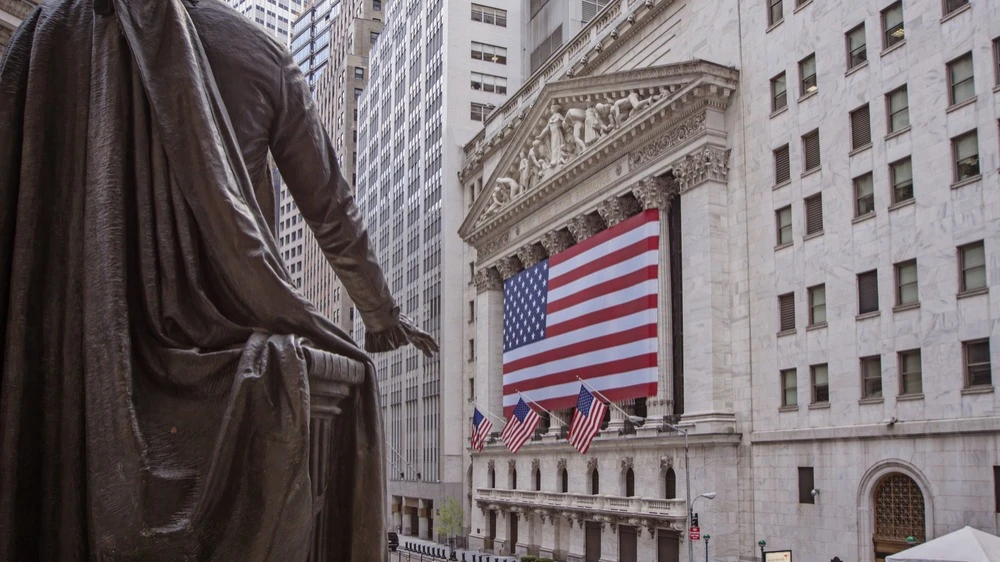"Buffett Indicator" and Barclays pointed to overheating stocks. Is it time to sell the securities?
US market capitalization is more than double the country's GDP

"Legendary investor Warren Buffett's "favorite indicator" showing the ratio of U.S. stock capitalization to GDP has risen above its record set during the pandemic - before the 2022 collapse. Barclays Bank created its own indicator - and it, too, pointed to an overheating U.S. market. Should investors be worried about this?
Details
After a 36% rise in the U.S. stock market since April, the total capitalization of the U.S. stock market is about $72 trillion - about twice the size of the U.S. economy, despite rapid GDP growth over the past two years, Bloomberg writes.
"The current ratio shows that stocks are overvalued and raises concerns about bubble-like behavior," Barclays derivatives strategists said in a note cited by Bloomberg. Although the Buffett Indicator has limitations, "investors should take the record market capitalization-to-GDP ratio as another signal of excessive optimism," the bank said.
What else could indicate a bubble
Barclays' 2025 team introduced its own index to gauge euphoria in the market, based on options data since 1997, Bloomberg noted. The bank's analysts calculate that this index moves in unison with the "Buffett Index" and is now giving similar warning signals. It measures the share of overheated stocks among U.S. securities with liquid options - it now stands at about 11% against a long-term average of 7.1%. By comparison, the figure exceeded 10% during the dot-com bubble and the hype around "meme stocks" in 2021, Bloomberg reported.
"Bearish" minded analysts cited by the agency warn that a slowing labor market and signs of strain among less affluent consumers make the U.S. economy vulnerable. In addition, there have been new concerns about market concentration and a possible correction in stocks, said Deutsche Bank strategist Jim Reed. "A telling example of this shift," he cited Palantir's securities falling nearly 8% in a day, despite the company raising its revenue forecast just a day earlier. With Palantir's shares quadrupling in a year, investor expectations "were overly high for any earnings report," Reed added.
Barclays strategists urged caution: although the market is entering a seasonally strong period, investors should temporarily take advantage of the gains by locking in profits after the rally and not risk keeping positions open for too long, Bloomberg reports.
But is it all that bad?
At the same time, companies continue to show steady profits, and investments in artificial intelligence support business activity, Bloomberg notes. According to Bloomberg Intelligence, more than 70% of the S&P 500 companies that have already reported for the third quarter showed profit growth of almost 13% year-on-year, and revenue is growing at the fastest pace in three years.
In addition, the structure of the stock market has changed dramatically over the past two decades: technology giants, which generate huge cash flows, now account for about a third of the S&P 500 capitalization, Bloomberg writes. According to Barclays strategist Stefano Pascale, the accuracy of the "Buffett Indicator" is also affected by the fact that U.S. companies make an increasing share of their profits abroad, while GDP reflects only activity within the United States. In addition, investors "tend to be optimistic when things are going well," and this pushes GDP up, the analyst added.
What does Buffett think of "his favorite indicator"?
Back in 2001, Warren Buffett warned that investors were "playing with fire" when the market capitalization-to-GDP ratio was high, Bloomberg recalls. However, in 2017 the head of Berkshire Hathaway said that this indicator should not be considered in isolation: "It is not so simple to determine by one or two formulas whether the market is overvalued or undervalued". Millarder emphasized that "every number has meaning," but its meaning depends on the context.
This article was AI-translated and verified by a human editor
